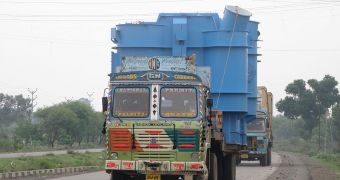Energy-efficiency can be tackled in so many different ways, involving renewables and expensive high-tech devices. However, a recent research conducted by Michelin and Volvo Truck reveals that there are other simple cost-effective methods of curbing greenhouse gas emissions while saving some cash.
Apparently, tire pressure, a proper wheel alignment and rolling resistance are key elements in this equation, helping drivers preserve their budget and offsetting the carbon footprint of their large vehicles by up to 15%.
These beneficial changes can also be translated in significant financial advantages of up to €8,000 ($10,356) for every truck and big rig, obtained on an annual basis, GreenBang informs.
Easy-to-follow steps are in this case useful and highly recommended to reduce the amount of polluters lowering air quality.
Even though checking the tire pressure and wheel alignment are simple measures that do not require considerable investments, only a few drivers are aware of their monetary and environmental benefits and choose to apply them regularly.
“There is a lack of awareness in the transport industry about the importance of checking tires and wheel alignment, on both the truck and the trailer. If everyone did this, it would have a significant impact on carbon dioxide emissions,” stated Arne-Helge Andreassen, business area manager for tires and wheel alignment at Volvo Trucks.
If every truck driver were to follow the same path, the transportation sector would become more eco-friendly without requiring a considerable governmental support.
As a part of their research, experts from Volvo and Michelin have taken into consideration various types of tires, wheel alignments and tire pressure, revealing their impact on truck mileage and the amount of generated greenhouse gases.
After performing a 1,000-kilometer test, they reached the conclusion that a bad wheel alignment could dramatically increase fuel consumption. On the other hand, an appropriate wheel alignment could increase fuel efficiency by up to 11%, according to the recent study.

 14 DAY TRIAL //
14 DAY TRIAL //